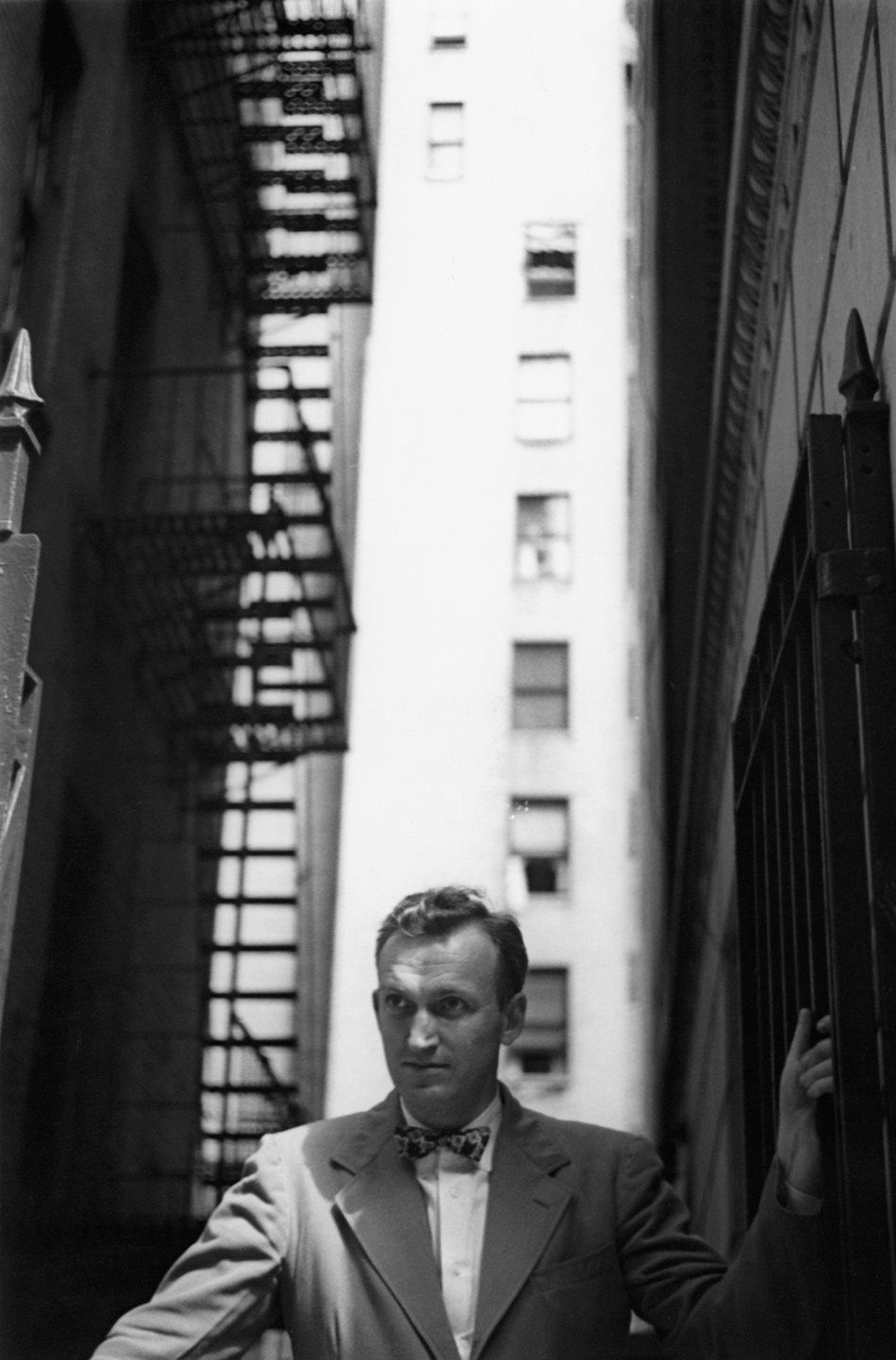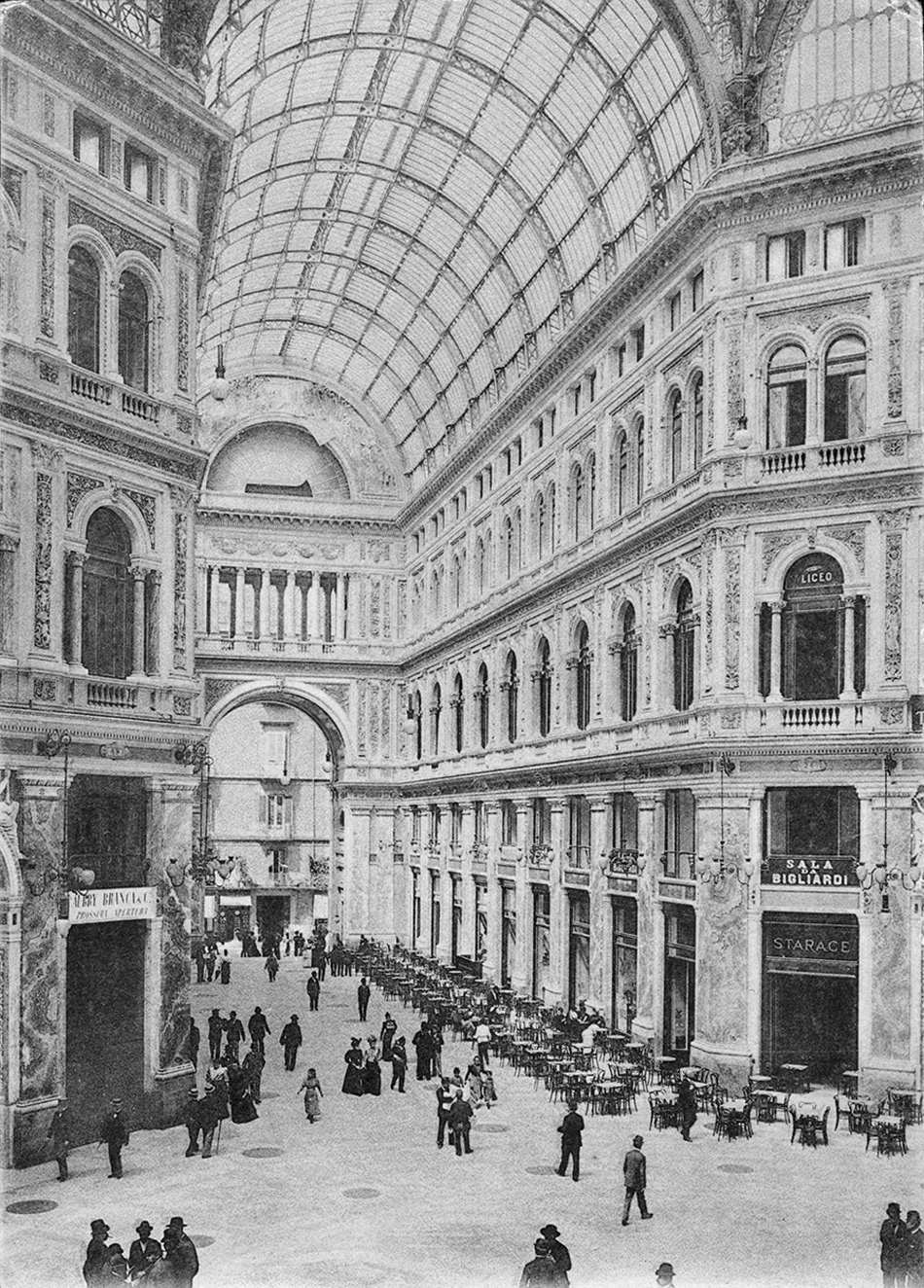For a while in the 1940s John Horne Burns was widely considered one of the most promising American novelists, and his best-selling war novel, The Gallery, intimidated Gore Vidal, Norman Mailer, and Joseph Heller. Then after not one but three dud novels he committed suicide at age thirty-six (or rather his death seemed to be self-willed, caused by epic drunks and exposure to the sun).
Other successful first novelists of the period killed themselves, such as Thomas Heggen (Mister Roberts) and Ross Lockridge (Raintree County). Burns was mostly forgotten, though over the decades Gore Vidal would frequently tell friends about the gay flash-in-the-pan author. Even Ernest Hemingway remembered him and as early as 1947 was recommending The Gallery to his Italian publisher, saying, “Very controversial book. Will raise hell to publish it. But really good.”
Those were the days when Americans still took new fiction seriously, and young novelists were fiercely competitive. Even friendliness took on a competitive tone. When James Michener beat Burns for the Pulitzer, he was quick to concede that Burns was the better writer; Burns turned around and said that Michener’s Tales of the South Pacific “will probably remain a minor classic”—damning with faint praise. Of course no one knew then that Michener’s book would be adapted into the blockbuster musical South Pacific, and that he would go on to write forty more doorstops that would gain him a fortune but little distinction.
In his 1991 memoir Michener wrote, “I think of John Horne Burns every week of my life,” and said he regretted the loss of the challenging competition that Burns would have represented: “I am sure he and I would have competed, honorably and vigorously, throughout our lives.” I doubt that many American writers today think in this way. The rewards are too few, the fame too fleeting, the terrain too parceled out in neat subdivisions of distinct minorities. No one talks anymore of “the great American novel.”
The Gallery is an excellent novel,* a series of portraits linked by “promenades” that recall other places during the war. The unity of the book, such as it is, is established by the primary setting: Naples’s nineteenth-century glass-roofed shopping arcade, the Galleria Umberto I, which today is mostly deserted but which in World War II, after the Allied conquest, was a populous center for prostitution and the black market. The book is really more a series of vignettes than a through-composed novel with a plot.
Burns wrote it rapidly and for once in his often bitter and sneering life he was compassionate toward his strange assortment of characters. This is the same man who at the Excelsior Hotel bar in Florence shortly before his death would mockingly repeat the awkward banalities fans would address to him: “One of his favorite tricks was to parrot what was said to him in an imbecilic voice,” an observer commented. His second published novel, Lucifer with a Book, was so cruelly satirical that one man he skewered committed suicide. But no matter how briefly, during the composition of The Gallery, Burns was a better, kinder man. Maybe it was because he was so happy to be in Italy, a country whose language he had learned at Harvard (he translated Dante while there) and whose people he preferred to Americans:
I think Italians are the greatest people on earth. They’ve got everything Americans haven’t got. Italians are people of the heart; their country is the land of the soul. I love Italians. Italians love me.
Maybe the nearly universal sufferings caused by the war had shocked him into an affectionate toleration for all of humanity. Maybe his alcoholism was at a mellow stage before the nasty stage set in (if things progress like that). Or maybe he’d come to see himself not as one superior to others but just an interchangeable person: “I became aware that there are millions of other people in the world, and that they’re very much like me.” Perhaps in his job as an army censor, obliged to read thousands of letters first from Italian POWs and then from GIs in order to excise any strategic information that might fall into enemy hands, he had concrete proof before his very eyes of how similar we all are.
Many talented writers are from nouveaux pauvres families—Melville, Faulkner, Fitzgerald, Tennessee Williams, Pynchon to name just Americans. It’s as if the family’s romantic past gives them a nostalgia for lost prestige they are eager to win back through their mythmaking works. Burns certainly conformed to this pattern. The Burns family was wealthy for a time, with chauffeurs and gardeners, but as Catholics they felt excluded by their neighbors in very WASPy Andover, Massachusetts. Burns’s mother was caustic and friendless, her only companion the woman who did her hair. Burns took after his mother and felt himself (perhaps defensively) superior to the other boys at prep school and then at Harvard, where he roomed alone. Burns once told a wartime friend:
Advertisement
Shortly after my umbilical cord was cut I was aware that not much was to be hoped for from anybody, that I must live alone and die alone, and that just for my own satisfaction I owed it to myself to be as clever and as attractive as I knew how to be.
Despite this maddening smugness, Burns was inventive and observant and often profound in The Gallery. In the chapter called “Momma” he follows a sweet, middle-aged Neapolitan, the proprietor of a gay bar in the Galleria, through her day as she wastes time at a movie, preparing herself psychologically for her three hours “onstage,” the very limited time the US Military Police allow a bar to be open. She can understand but not speak English, but in spite of this barrier she feels very attached to her clients, all male except for one tough lesbian who’s always buried in a book. She thinks of them as smarter and better looking than the ordinary run of men:
Her dreams were always the same, of the boys who came to her bar. There was a heterogeneous quality about them. They had an air of being tremendously wise, older than the human race. They understood one another, as though from France and New Zealand and America they all had membership cards in some occult freemasonry. And they had a refinement of manner, an intuitive appreciation of her as a woman. Their conversation was flashing, bitter, and lucid. More than other men they laughed much together, laughing at life itself perhaps. Momma’d never seen anything like her boys. Some were extraordinarily handsome, but not as other men were handsome. They had an acuteness in their eyes and a predatory richness of the mouth as though they’d bitten into a pomegranate. Momma dreamed that she was queen of some gay exclusive club.
Burns seems to be subscribing here to the idea of a gay conspiracy or collective. It’s a little hard to imagine an Italian businesswoman in 1943 might be thinking all that; we hear the author’s voice. No other person from that period could remember Momma’s; perhaps Burns invented it.
Actually Burns, like so many old-style queers, was usually very cruel and dismissive to his fellow gays (oppressed people don’t like themselves). He hated Christopher Isherwood and especially Truman Capote; he predicted Random House’s infamous author portrait would do Capote in (“the fingernail polish, the waistcoat, the hairdo of a Mongolian idiot”). In those competitive times, Burns’s war novel (and everyone else’s) was eclipsed by Norman Mailer’s, just as Burns’s prep school novel, Lucifer with a Book, was overshadowed by J.D. Salinger’s.
At the time of its publication critics scarcely mentioned the gay content in The Gallery, though the book is saturated with it, and not just in the “Momma” chapter. One aspect of homophobia in those days was to ignore the gay “problem” altogether; it was only word of mouth that alerted me in the 1950s to gay-themed books such as those by Gore Vidal and James Baldwin.
One chapter in The Gallery, “The Leaf,” is an arresting and nuanced portrait of Major Motes, a self-important tyrant, head of a division of American censors, who is gradually seduced by Stuki, an ambitious subordinate. Stuki manages to move in with the major and before long he is sleeping beside him in the nude and giving him long massages—until Stuki himself is displaced by another up-and-coming officer. Every page is a little queer, at least to an initiated reader:
An elderly lieutenant colonel of the party lurched to his feet and cried whoopee. He grabbed the prettiest and youngest of the P/W waiters and pushed him into a tango over the floor among sparring junior officers and nurses and the girls of Algiers. From the club’s doorway came an MP to break up the clinch of the colonel and the Italian, who had begun to cry.
That touch—“who had begun to cry”—shows that Burns, despite the imperiousness of his manners and desires, understood that sexual abuse knows no gender.
“Dreadful” was a code word for “homosexual” that Burns used in letters to a homosexual student, who he hoped would be his Boswell (the word had been used by one of his aunts as a generic dismissal). Since Burns was a professing Catholic, there were no New England prep schools that would hire him—except Loomis in Windsor, Connecticut, which had been founded more recently than the others and specifically as a nondenominational institution.
Advertisement
For its generosity the administration was richly rewarded—Burns’s second novel viciously lampooned the headmaster and the teachers and the students. Nor was the book any good. It received unusually harsh reviews, partly because expectations were so high after The Gallery—and partly because the voice in it was so relentlessly snide. Vidal declared:
Burns was a gifted man who wrote a book far in excess of his gift, making a kind of masterpiece which will endure in a way that he could not.
Later Vidal said in an interview, “He was an awful man. Monster. Envious, bitchy, drunk, bitter.” One of Burns’s academic targets in Lucifer with a Book is described as a “eunuch” whose penis is “underdeveloped” and who is presented as a busybody. Only one of the teachers is admirable—the one based on Burns himself, called Guy Hudson. He is macho, clever, arrogant—all considered in the world of the novel as enviable qualities. Whereas his war experiences have lent Guy a certain depth, his colleagues “chattered as though life was an intellectual garden party and themselves sophisticated marionettes.” Even those dismissive adjectives (“intellectual,” “sophisticated”) are out of a pretentious moron’s vocabulary.
Even so, despite its bad press and word-of-mouth, Lucifer sold well, some 17,500 copies, only three thousand fewer than The Gallery. The critics dismissed it as a list of grudges. Canadian customs banned it for its lewdness. Burns just assumed Americans were thin-skinned and couldn’t bear to be satirized. He walked out on his teaching job and moved to Boston, where he wrote like a less talented but no less arrogant Nabokov:
I love to analyze the grime of Boston which silts up my windowpanes, and to savor the gentle and rather hilarious tempo of her society. And though it might sound pretentious, I’m aiming at a synthesis of naturalism and anthropomorphic ethics in the American novel. I will if I can, and I think I can.
Although Burns had always criticized expat writers, after the Lucifer disaster he moved to Florence. He lived in a villa in the hills and every evening stood at the bar at the Excelsior Hotel, virtually the only night life in the war-impoverished city. He fought with the translator Francis Steegmuller, befriended the young novelist and translator William Weaver, acquired a younger, handsome lover named Sandro—but mainly he drank himself blind. Patricia Highsmith observed Burns drinking himself to death.
He also managed to write another novel, A Cry of Children, so bad that his American and English publishers considered turning it down. It is about another sophisticated Burns surrogate, this time a handsome concert pianist, and his slatternly girlfriend. When the book came out, it was universally panned. Brendan Gill said in The New Yorker that the dialogue was “of sequoian woodenness.” Commonweal remarked, “It all seems like a waste of time: Burns’s writing it, Harper’s publishing it, the reader’s reading it.” Although critics had overlooked his sexuality in earlier books now they zeroed in on “the slime of neuroticism, homosexuality, and assorted perversions.” I remember that if critics liked a book back then they wouldn’t mention its homosexuality; only failures were singled out for the stigma of queerness.
Did Burns kill himself?
Despite the decades that have gone by, the lack of living witnesses, and the obscurity of his subject, Margolick has done a superb job researching this sad life. In the last weeks of his life, Burns went with his lover, Sandro Nencini, to Nencini’s family’s summer home south of Leghorn, in Marina de Cecina. It was, romantically enough, near the place where Shelley had drowned. On August 6, 1953, Burns went out sailing and got a terrible sunburn. He went to bed early but a few days later he was having seizures and had to be hospitalized. He was foaming at the mouth. He died on August 11, two months shy of thirty-seven. To have the body repatriated his family had to spend $950. At the funeral mass in Back Bay only four people attended.
When officials from the American consulate made an inventory of Burns’s belongings they found:
A tan leather Gladstone bag, worth $4.00. New shirts: $6.00. Worn ones: $3.00. Three pairs of pants—gray, flannel, gray denim, and blue denim: $6.50. A gray suit: $6.00. A gray tweed overcoat: $10.00. An Unda radio: $10.00. Eleven framed pictures: $5.00. Packages of typing and carbon paper: fifty cents apiece.
That was it. He had some more things of the sort. Not much.
-
*
First published in 1947, it was brought back into print in 2004 by New York Review Classics, with a new introduction by Paul Fussell. ↩





